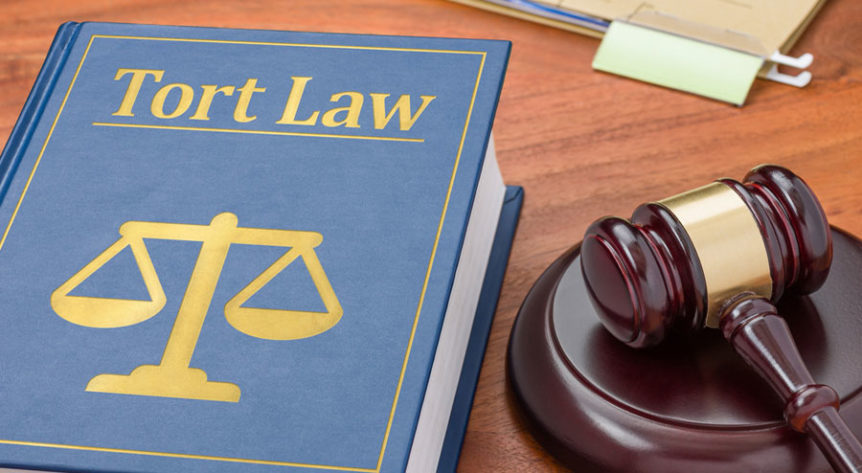Tort law is civil law regarding when one person violates another. This violation against another can be physical, pain and suffering, or property damage. These laws decide if an individual is legally the cause of your accusations. It also ensures that the plaintiff receives monetary compensation for punitive damages from an individual who’s made life difficult.
Like most common law, tort liability and Tort laws and aren’t criminal laws. However, a tort against another can be a criminal offense. While criminal cases are used to discipline someone who carries out a criminal offense or through negligence, tort cases are used to discipline someone that’s made an offense toward another.
It’s important that you know the basics of tort law if you want to bring a civil claim against someone else.
The Four Elements of Tort Law
There are several elements that you need to make up a tort case between two people.
Duty of Care
In order to win a tort case, you have to prove that the other person (also known as tortfeasor) owed you a duty of care.
This duty involves taking all precautions to protect you from any type of harm. That harm isn’t limited to physical injuries or illnesses.
That could mean a manufacturer owes you a safe product when you purchase their products. They owe you that duty of care.
Breach of Duty of Care
Next, you have to prove that this individual breached their owed duty of care toward you.
So, say the product you bought that was built by this manufacturer (the defendant) went haywire and caused a personal injury (the plaintiff). By selling the product, they should have ensured that the product had no issues.
Causation
Now the causation of the incident needs to be proved. This means what caused the violation or harm toward you is proved.
The product you purchased from this manufacturer caused you an injury because it was improperly made. You need to prove that this specific product created your injuries or violation.
In other words, you wouldn’t have had the injury without using this product.
Injuries or Damage
Lastly, in a tort case, you need to prove in court that you did, indeed, receive injuries.
This product caused you to cut off a chunk of your finger. Medical records from your ER visit and further visits you’ve had can help you prove that you received an injury from the faulty product.
This is basically evidence that proves the injury of the plaintiff. Without some type of injury or violation, you wouldn’t be filing a civil case against the manufacturer or receive punitive damages.
The Four Main Types of Tort Cases

Tort law is a broad term for the civil laws from torts (or offenses against someone). There are numerous types and subtypes of torts, but we’re going to learn about the four major torts.
Intentional Torts
An intentional tort is, simply put, when the tortfeasor was out to hurt you or damage your property. They had clear intentions to violate or harm you. Most intentional torts are criminal offenses.
Your lawyer must show evidence that proves that the individual had intentions to hurt you. Sometimes, all your lawyer will have to prove is that the person should have known that the actions of their consequences would end up harming you in some way.
Examples of intentional torts include:
- Assault
- Battery
- Conversion and theft
- Defamation
- False arrest
- False imprisonment
- Fraud
- Harassment leading to emotional distress or harm
- Invasion of privacy
- Property damage
- Trespassing
Negligent Torts
Negligent torts are when someone violates or harms you without intention. However, their actions are negligent or reckless, which ended up with you to pay for their choices.
Negligent tort is the most common form of tort and slips and falls are the most common type of negligent torts.
Examples of negligent tort include:
- Bicycle accidents
- Car accidents
- Construction accidents
- Falling objects
- Medical malpractice
- Motorcycle accidents
- Pedestrian accidents
- Slip and fall accidents
- Truck accidents
Strict Liability Torts
Strict liability torts are when violation or damage is caused but it wasn’t due to any negligence nor was harm intended. But even without intention or negligence, there were harmful consequences.
Our example on the manufacturer sending out a faulty product fits into the strict liability category. The manufacturer didn’t want their product to cut off your finger and it wasn’t due to careless behavior.
It has to be proved that the manufacturer knew about the product defect before it was sent out to stores and customers.
To be able to bring a strict liability tort case, it first has to be proved that this company manufactured the product you purchased. Then, it has to be proved that the product was defective when you bought it.
Examples of strict liability torts include:
- Animal bites and attacks from dangerous pets
- Animal bites and attacks from wild animals owned by someone
- Abnormally dangerous activities/ultrahazardous activities
- Defective products
- Transportation and storage of hazardous chemicals
Federal Tort
Federal tort laws are laws that allow you to file a tort case against the U.S. government. Now, it hasn’t always been as easy to bring these types of cases to civil court.
The Federal Tort Claims Act (FTCA) grants you permission to sue the federal government. When someone that’s working for and acting for the federal government violates or harms you, you can take this to court to receive deserved compensation.
In order to start a civil lawsuit against a federal employee or agency, you must first file an administrative claim with that specific federal agency within two years of the incident. You receive a response to your claim within six months.
If you don’t like the response, you have six months to file a tort lawsuit against the government.
Conclusion
Unfortunately, there are some bad eggs out there. Whether someone intentionally set out to harm you or it was due to their reckless behavior, you deserve compensation for the damage done.
It’s these situations that brought tort laws in place. And it’s these situations that deserve to be brought to civil court.
